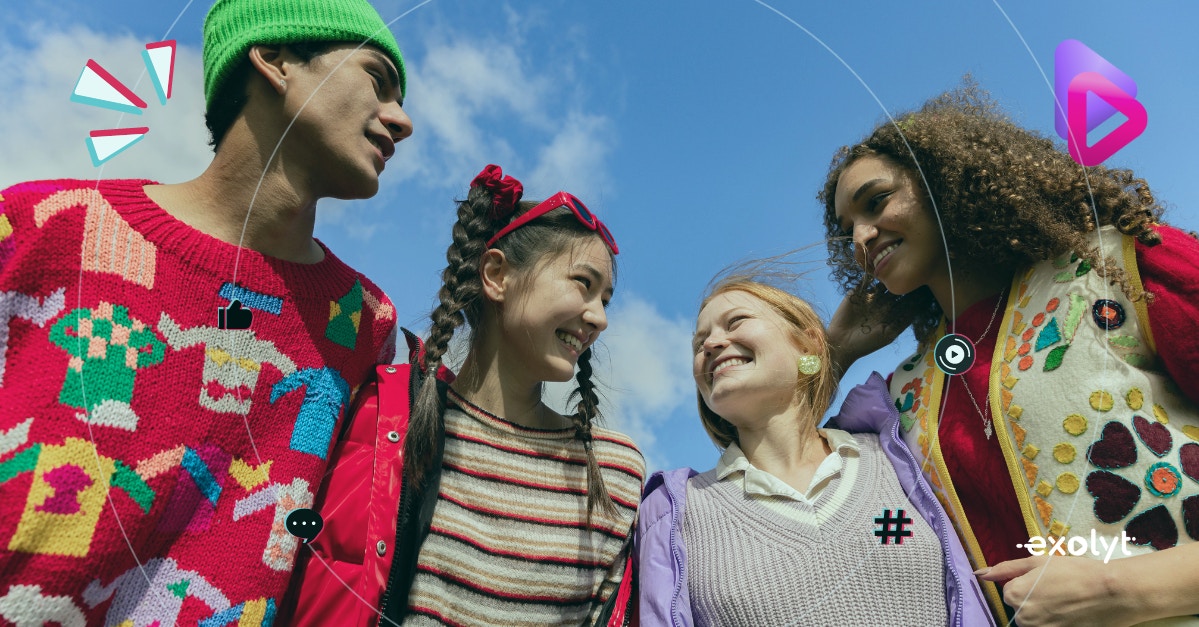Everyone knows what trending topics on social media are, from the earliest days of Twitter trends, which indicated which conversational topics were most popular at the time, right through to the current day and TikTok’s trending now, which includes trending hashtags, trending sounds, and trending videos.
But how can these microtrends be useful in understanding the bigger picture? And how can you spot the difference between a trending topic and a growing movement? That’s exactly what we’re going to discuss in this post.
Throughout the post, I’ll use ‘cozy culture,’ a cultural trend that I identified and analysed, to illustrate my points.
Fast Culture & Slow Culture
According to Canadian cultural anthropologist Grant McCracken’s definition, fast culture refers to the rapidly changing, ephemeral aspects of culture that are primarily driven by trends, media, and tech innovations, whereas slow culture talks to the more enduring, deeper aspects of culture that change slowly over time and are viewed as carrying more significant traditional value.
For example, 'Cozy Culture' is one such trend that is both fast and slow and heavily seasonal. The slow culture aspect is rather broad and accessible—just as there is a TikTok for everything, nowadays, there is a 'cozy' for everything!
So, to identify such a trend, we must combine fast and slow cultures. One key theme unifying these cultural elements is finding a community that manifests as trends in various ways in multiple channels and formats.
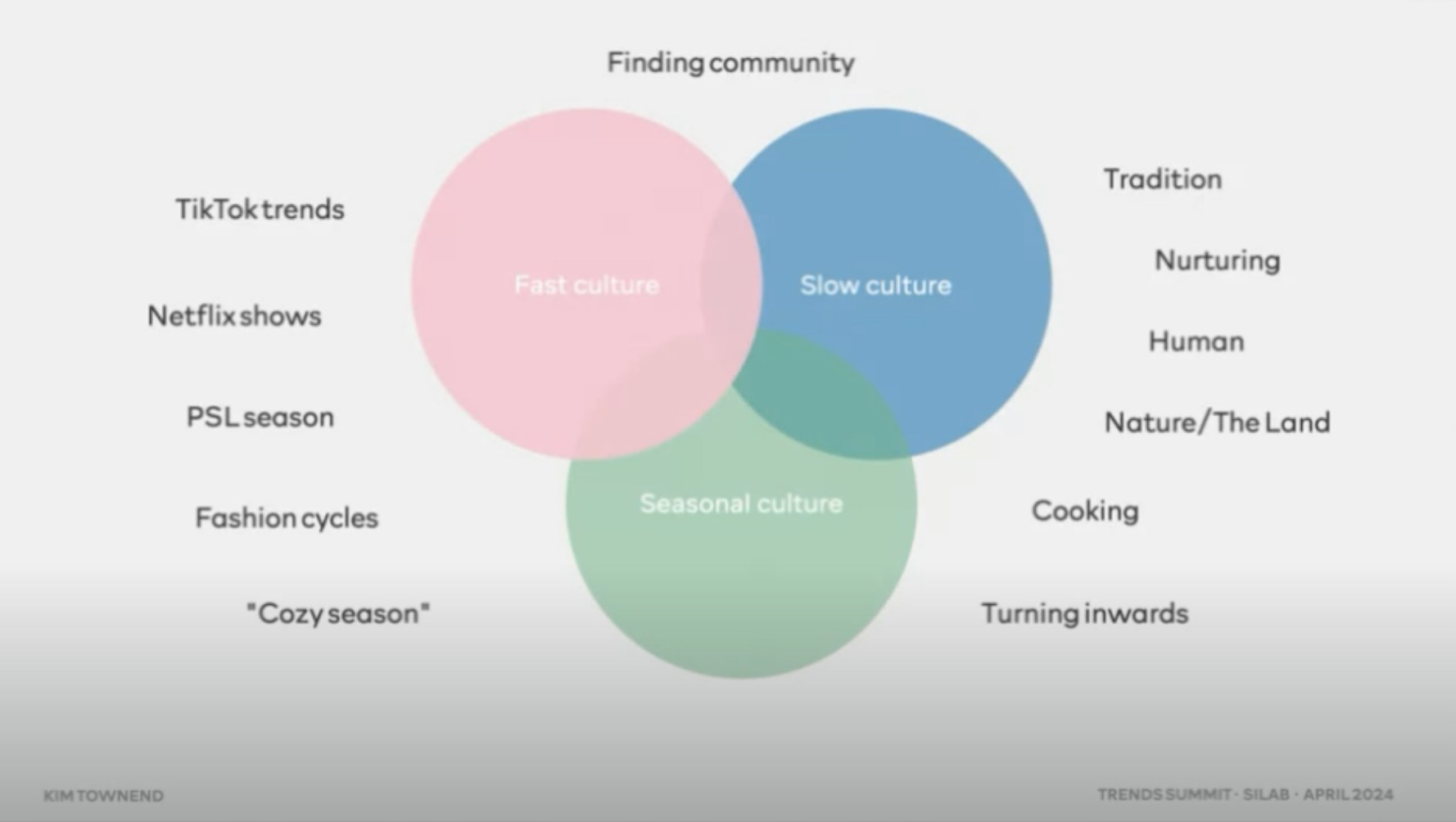
Source: Presentation at Social Intelligence Lab Trends Summit
Trends in isolation teach us very little, but trending topics viewed over time show us patterns and commonalities.
It’s obvious that social media trends are the epitome of fast culture, but what can they teach us about slow culture? We must combine fast and slow cultures to help us forecast social and cultural implications, as simply looking at social media trends isn’t enough.
But how do we do that?
This is a two-step process involving identifying fast culture and validating its presence, followed by uncovering the key themes underlying it as slow culture.
Identifying fast culture with social media
We begin with social horizon scanning. You can do this manually or use a tool like Exolyt to speed up the process.
To do this manually, be a regular social media user and pay attention to what you see happening. But beware, the FYP! Just because an algorithm is serving it to you, it doesn’t mean it’s not super niche. Always check your trend hunches with social listening tools to ensure accuracy!
The easiest way to identify TikTok trends is to use Exolyt’s ‘trends’ section, which shows you which hashtags and sounds are trending on TikTok right now. It’s a great starting point for your journey, as you can run all the TikTok analysis you need on the platform itself. If you’ve spotted something of interest and are tracking it, you can see how quickly it’s growing.
However, it is important to understand its longevity for cultural context because fast and seasonal trends are not so important for building social strategy but can be utilized for responsive content.
This example shows the growth of two cozy culture subthemes I’ve been tracking for a while. The image represents their growth trends on TikTok.
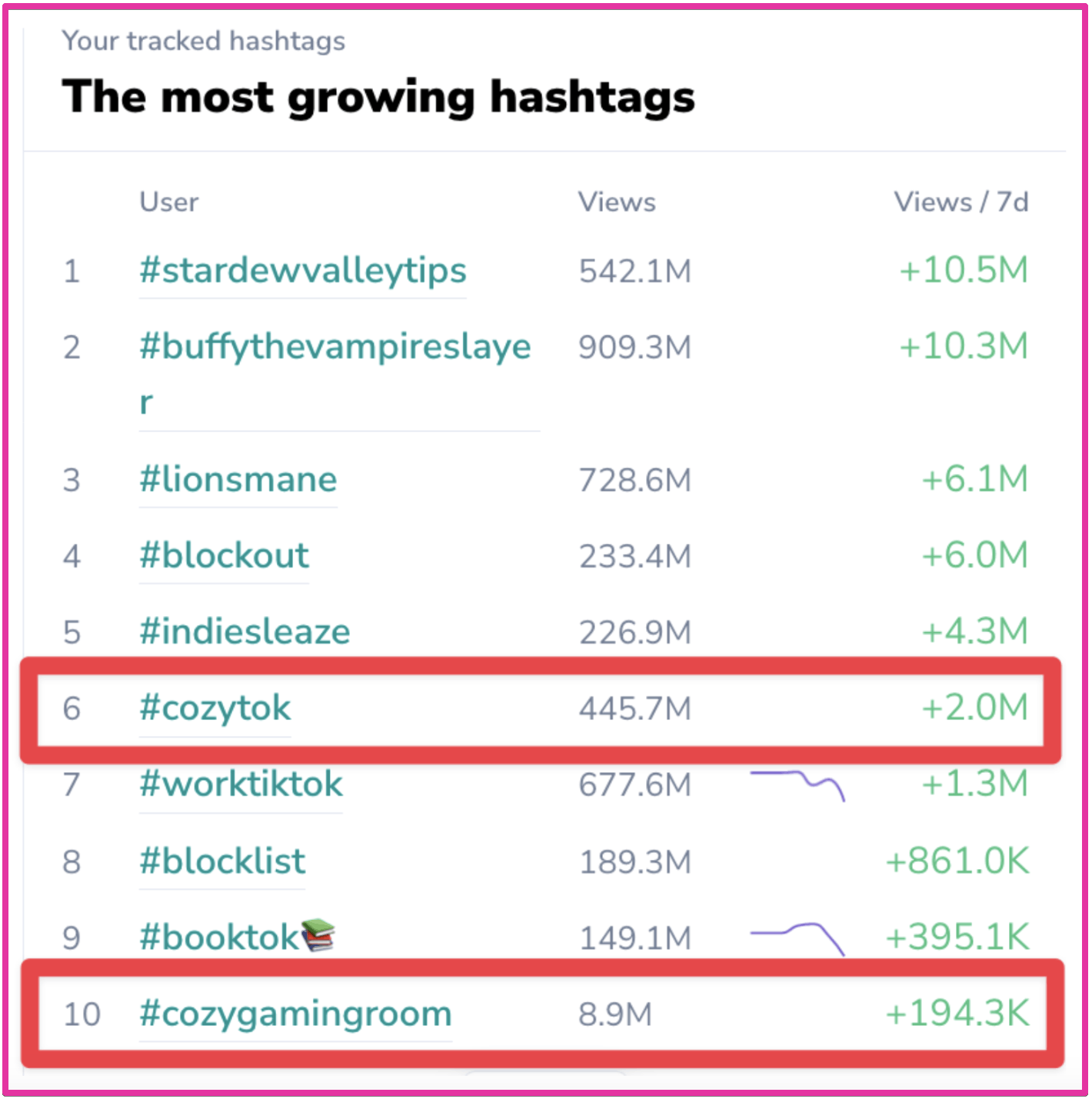
Source: Exolyt
Identifying the slower culture that underpins it
Now that you’ve identified the trending topics that interest you, how do you start to unpack their cultural significance? These are five simple steps you can use:
1. Look for connections
One of the best ways to easily contextualise something you’ve spotted on TikTok is to look at how it connects to other trends and communities.
The Exolyt ‘related’ tab is the best way to do this on TikTok. Select ‘connections to other hashtags’ from the drop-down menu and the timeframe you want to look at, and you’ll be presented with a network graph.
The general rule is that the more disparate communities that use your tag over time, the more important it is in shaping the culture. For this reason, it’s best to track the hashtags you’re interested in and revisit them over multiple months. Trending topics are usually short-lived, and you’ll see fewer connections over a shorter period of time.
Below is the chart generated around the #cozy hashtag, which taps into many different subcultures and micro trends. The number of different communities that #cozy is associated with is a great indicator of whether this is a cultural trend or not. The more communities involved, the more likely it is to be cultural.
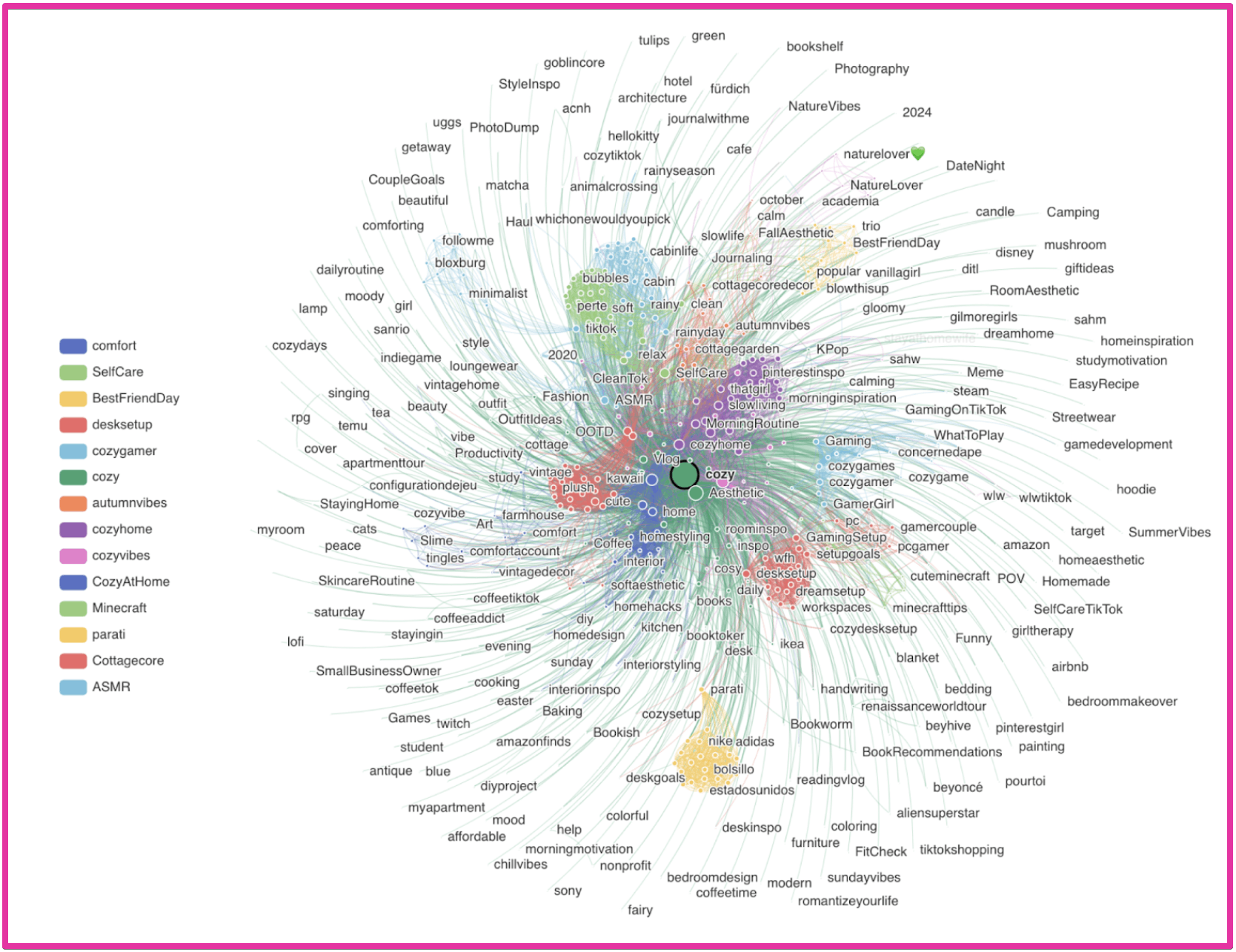
Source: Exolyt
2. Look for patterns and commonalities
This is where being very online comes in handy. The more time you spend doing ‘social listening,’ the easier it will be to connect trends and ultimately understand the bigger cultural shifts driving them.
Some things to look out for are: Who are the key communities? Which other trends are they involved in? Are there any trends you’re already familiar with that have a similar look or vibe? Is there a specific time or season that this topic comes up? And most importantly, is it still growing?
Tracking the hashtags you’re interested in, Exolyt makes it easy to understand whether a trend has already peaked or is still trending upwards.
3. How long and where has it been happening?
It is also important to analyse whether the trend is manifesting only on social media or across multiple platforms and whether people are searching for it.
It’s not to say that if something has only been around for two months, it won’t become a massive cultural phenomenon, but when things grow steadily over time, we usually see bigger shifts.
To understand how long your topic has been around. you can use social media listening to look back a couple of years. If the trend has been around for at least a year and it’s still trending up, then you’re good to continue.
Trending only on TikTok rarely points back to a bigger cultural trend. The signals that can help us identify bigger cultural shifts play out across multiple platforms. Look to Twitter/X, Instagram, Reddit, and Pinterest to understand if a version of your topic is happening across other social platforms.
Once you’ve established that, you’ll want to research whether people are searching for your trend. This can be done with a web search engine, TikTok, or Amazon. Multiple tools allow you to see the search volume for all these channels.
If the search volume is growing on at least one other platform, you’re probably onto something.
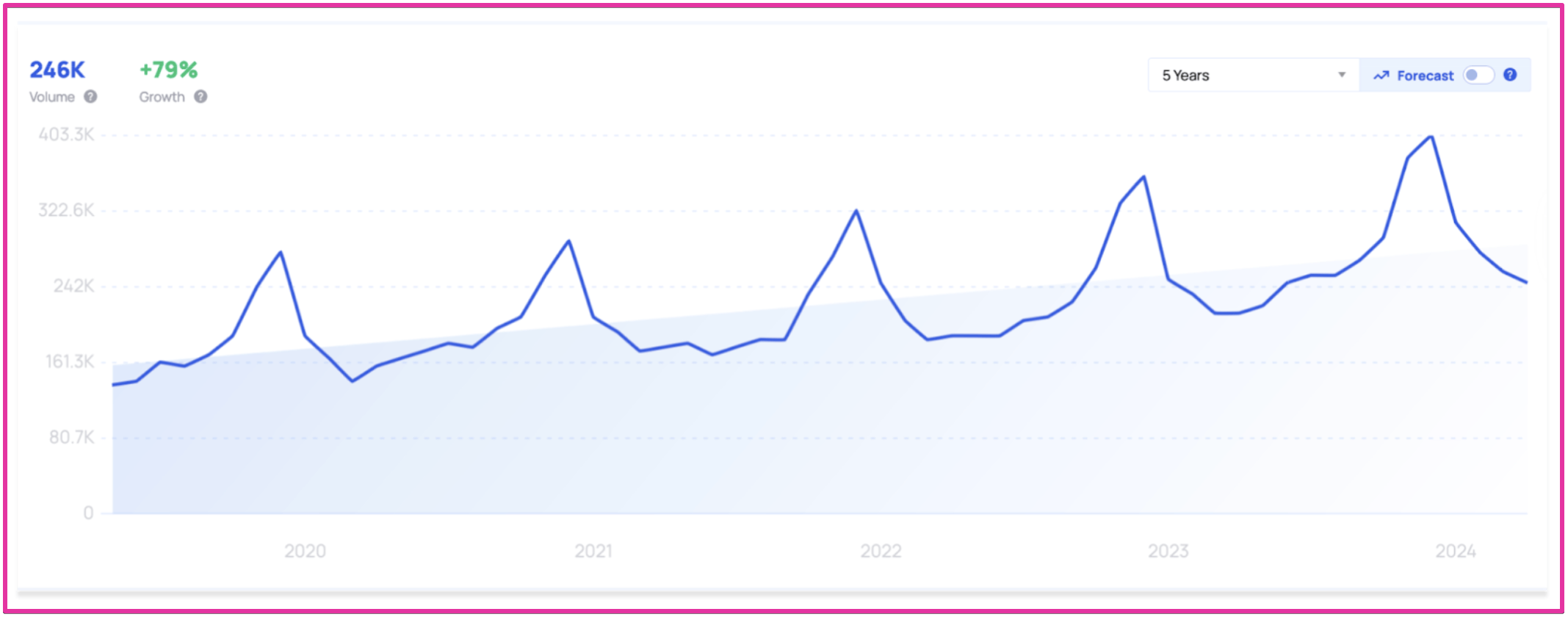
Source: Google Trends
The image above shows Google search data for the word' cozy' over the past five years. Although it experiences a seasonal spike, it doesn’t die off completely during the warmer months, and the search volume is growing steadily each year.
4. Analyse and contextualise
Now is the time to dive deep into your data. If you haven’t already set up a social listening search around your key topic, now is the time.
With all the AI tools available now, you might be tempted to use one to analyse all your data for you with no input. Don’t. This is exactly how you’ll miss the best insights!
Once you’ve collected your data and cleaned it, you’ll want to start the analysis. Spending time with your data and really using it to understand the communities you’re seeing is vital to gaining a sense of the bigger picture.
There are loads of great resources already out there to help you understand more about setting up social listening searches and running analysis on the data, so I won’t go into that here.
The chart below shows one way that I was able to understand my data better: first, I grouped the data into key categories and then looked at the volume for each category on different social platforms.
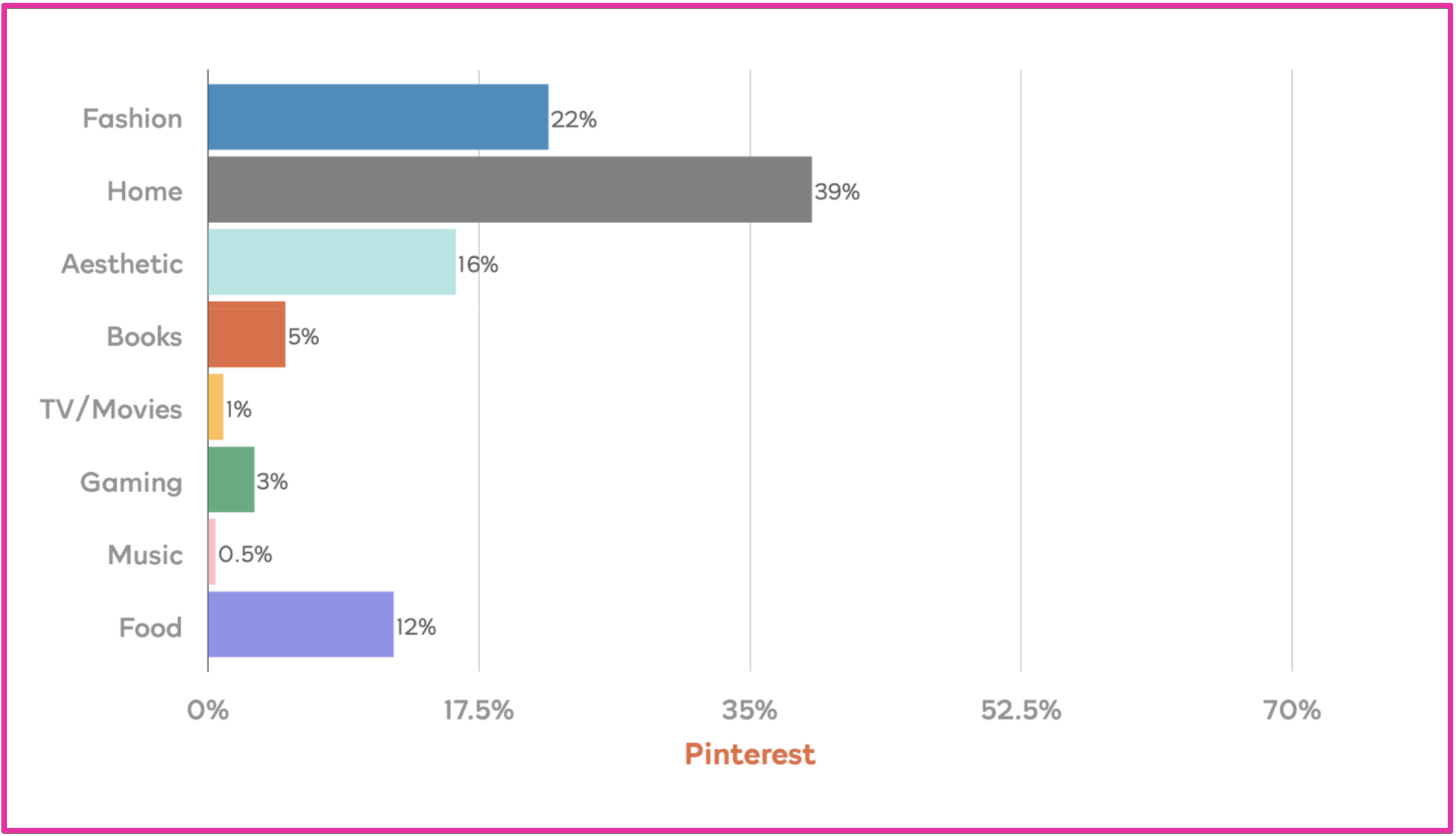
Similar analysis can also be performed on Exolyt - TikTok Analytics and Social Intelligence tool, where you can club trending cozy subthemes that often appear within the same thought community to track their share of voice on TikTok and monitor their growth patterns and usage to understand the size of the trend.
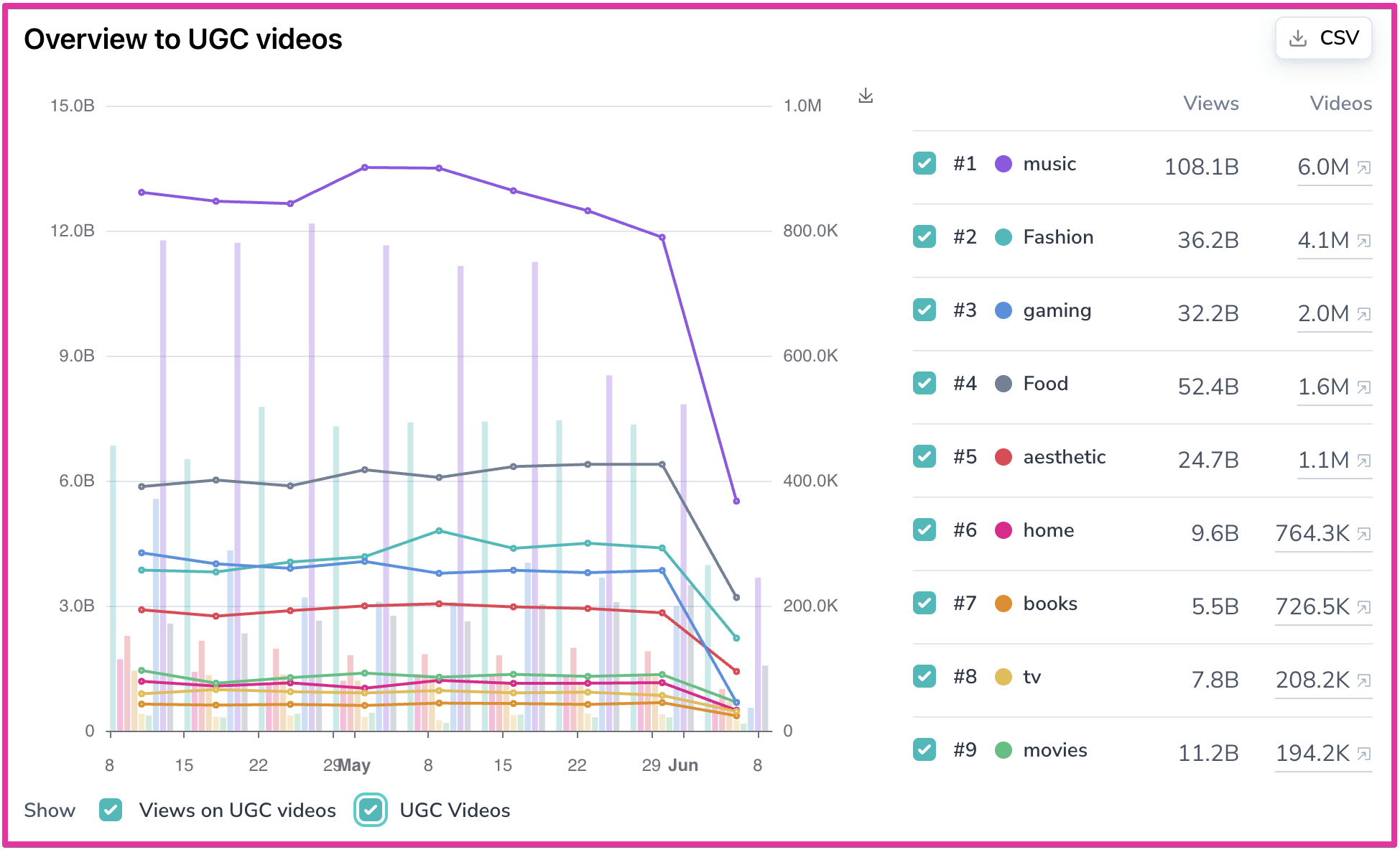
Source: Exolyt
5. What behaviour drives it, and is this part of a bigger trend?
The final step is spending time with your data set to analyze its long-term significance. To understand the cultural implications of our trends, we must understand what behaviour, desire, or unmet need drives them. Once you’ve identified these needs, you’ll be able to see where your trend fits in relation to other trends or cultural shifts. You can do this by working with a trends researcher or using self-serve trends platforms/reports to contextualise your cultural positioning.
An example of this, when I was identifying the bigger cozy cultural trend, was starting out by looking at cozy gaming, broadening it out to look at cozy in general, but then being able to connect it back into the smaller trends of ‘little treat’ culture or how it intersects with ‘pumpkin spice season’.
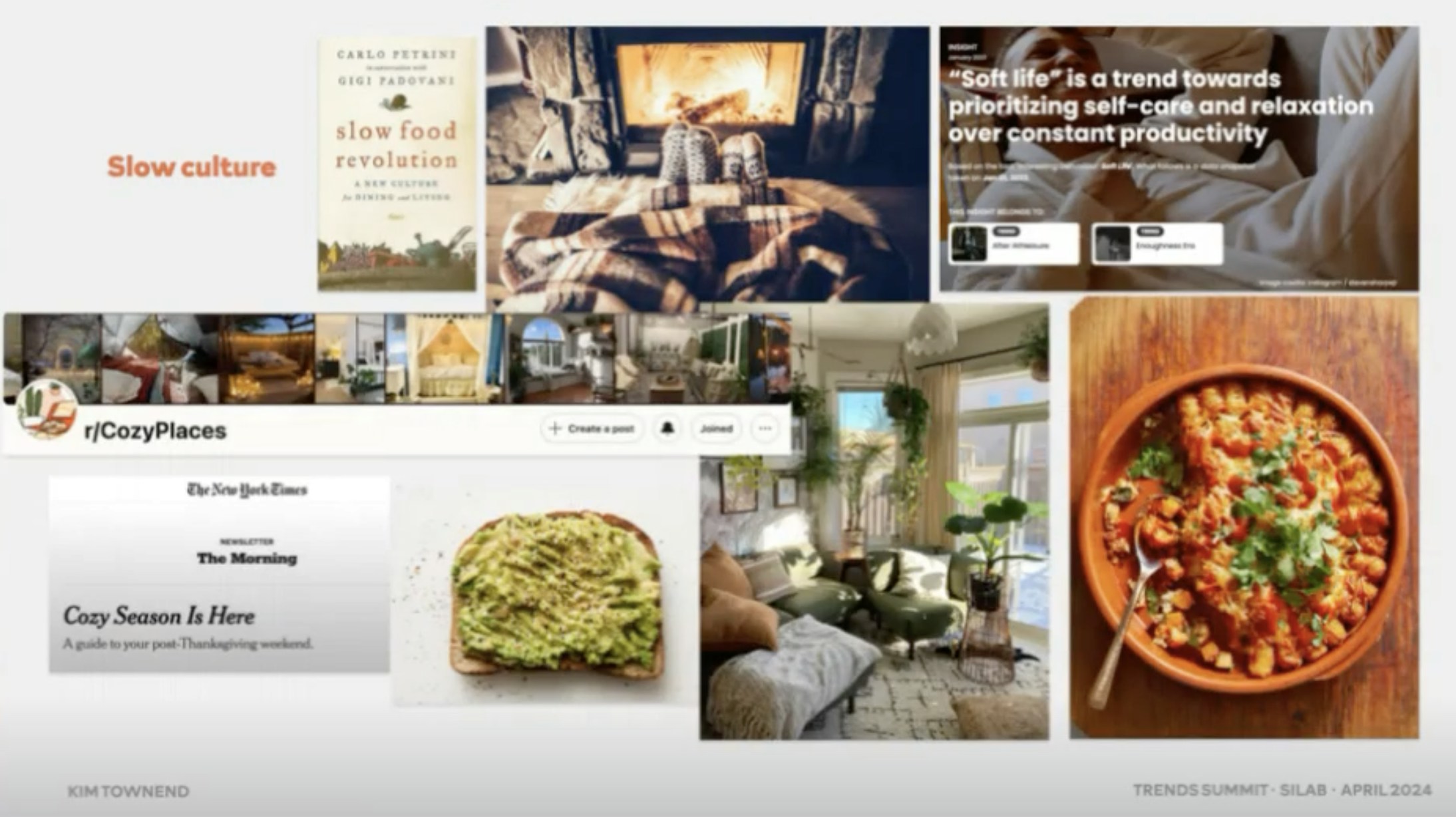
Source: Presentation at Social Intelligence Lab Trends Summit
Here are some examples of slow culture cozy themes rooted in longevity. These topics and trends help to inform the longer form of social strategy because they are based on human behaviour and desire, and they are usually bigger than a trend or trending topic.
Why does any of this matter?
We live in an extremely fast-moving world; identifying the trends that have longevity and are worth your time and investment is becoming increasingly important.
Social media is a cost-effective way to identify bigger trends and can help with multiple fields of work.
From future-proofing your social content strategy to R&D and product development, mitigating risk, and simply creating better user services.
Understanding where your topic of interest fits, why people are talking about it, where you can improve, and how to stay one step ahead of your competitors is key to future success on and beyond social media.
Check out some benefits of social listening and monitoring in the article below for a detailed overview.
This is a guest article compiled by Kim Townend, an award-winning social strategist and social listening consultant with 20 years of social-specific experience. She's worked with brands, broadcasters, and governments worldwide and is an expert in turning data into insights and insights into strategy. Find her at her website: https://kimtownend.com/ or LinkedIn page: https://www.linkedin.com/in/kimtownend/

